FOR PATIENTS WITH STAGE 2 T1D 8 YEARS AND OLDER
What are the stages of T1D?
Autoimmune T1D has 3 distinct and detectable stages.


Once diagnosed, autoimmune T1D progression is not a matter of if, but WHEN
Stages are identified by the presence of multiple autoantibodies and glycemic testing.

*Autoantibodies may become absent at this stage.
†For illustrative purposes only.
FPG=fasting plasma glucose.
If patients test positive for multiple autoantibodies, then in addition to an autoantibody test, perform routine glycemic assessment to confirm diagnosis and staging.
Once patients are in Stage 1 T1D, progression to Stage 3 becomes inevitable1
Once 2 or more islet autoantibodies are present and glycemic assessment confirms diagnosis, it's not a matter of if, but WHEN a patient progresses to clinical Stage 3 T1D. Once in Stage 1 or 2, the lifetime risk for progression to Stage 3 T1D is ~100%.
Risk of progressing to Stage 3 T1D
STAGE 1
5-year risk
44%
10-year risk
70%
Lifetime risk approaches
100%
STAGE 2
5-year risk
75%
Lifetime risk approaches
100%
The younger the patient, the more rapid the progression to Stage 3.1,5
Identifying autoimmune T1D early can give you more time.
Screen and stage for the opportunity to intervene before Stage 3 T1D.6,7

Refer your patients to specialists in a number of areas, including mental health and other support areas.

Talk to your patients and their care teams to know when and how to seek presymptomatic intervention.

Advise patients and caregivers to be vigilant for symptoms of hyperglycemia and DKA.
T1D can burden patients and caregivers physically, mentally, and emotionally8-11
For example, per year, the average Stage 3 patient may experience:

insulin needle injections annually8

insulin pump site changes annually9

T1D-related decisions
(ie, constant monitoring of glucose, food, and activity levels)10

higher depression rates than the general public11
There is currently no evidence to suggest that TZIELD will have any effect on burden of disease, outcomes, or life expectancy.
Screening reduced the risk of DKA at initial Stage 3 T1D onset by at least ~88% in children12
Up to 62% of newly diagnosed patients with clinical T1D without prior screening had DKA at diagnosis.13
DKA occurs when the body doesn't have enough insulin to allow blood sugar into cells for use as energy. Instead, the liver breaks down fat for fuel, a process that produces acids called ketones.14-16
DKA can have negative and long-lasting effects. A patient’s long-term glycemic management can be affected by a DKA event at diagnosis.14-16
There is no evidence to suggest that TZIELD will have any effect on the likelihood of or outcomes for those who experience DKA.


Learn how to support your patients' treatment
Important Safety Information Anchor
INDICATION
TZIELD is a CD3-directed monoclonal antibody indicated to delay the onset of Stage 3 type 1 diabetes (T1D) in adults and pediatric patients aged 8 years and older with Stage 2 T1D.
IMPORTANT SAFETY INFORMATION
WARNINGS AND PRECAUTIONS
- Cytokine Release Syndrome (CRS): CRS occurred in TZIELD-treated patients during the treatment period and through 28 days after the last drug administration. Prior to TZIELD treatment, premedicate with antipyretics, antihistamines and/or antiemetics, and treat similarly if symptoms occur during treatment. If severe CRS develops, consider pausing dosing for 1 day to 2 days and administering the remaining doses to complete the full 14-day course on consecutive days; or discontinue treatment. Monitor liver enzymes during treatment. Discontinue TZIELD treatment in patients who develop elevated alanine aminotransferase or aspartate aminotransferase more than 5 times the upper limit of normal (ULN) or bilirubin more than 3 times ULN.
- Serious Infections: Use of TZIELD is not recommended in patients with active serious infection or chronic infection other than localized skin infections. Monitor patients for signs and symptoms of infection during and after TZIELD administration. If serious infection develops, treat appropriately, and discontinue TZIELD.
- Lymphopenia: Lymphopenia occurred in most TZIELD-treated patients. For most patients, lymphocyte levels began to recover after the fifth day of treatment and returned to pretreatment values within two weeks after treatment completion and without dose interruption. Monitor white blood cell counts during the treatment period. If prolonged severe lymphopenia develops (<500 cells per mcL lasting 1 week or longer), discontinue TZIELD.
- Hypersensitivity Reactions: Acute hypersensitivity reactions including serum sickness, angioedema, urticaria, rash, vomiting and bronchospasm occurred in TZIELD-treated patients. If severe hypersensitivity reactions occur, discontinue TZIELD and treat promptly.
- Vaccinations: The safety of immunization with live-attenuated (live) vaccines with TZIELD-treated patients has not been studied. TZIELD may interfere with immune response to vaccination and decrease vaccine efficacy. Administer all age-appropriate vaccinations prior to starting TZIELD.
- Administer live vaccines at least 8 weeks prior to treatment. Live vaccines are not recommended during treatment, or up to 52 weeks after treatment.
- Administer inactivated (killed) vaccines or mRNA vaccines at least 2 weeks prior to treatment. Inactivated vaccines are not recommended during treatment or 6 weeks after completion of treatment.
ADVERSE REACTIONS
Most common adverse reactions (>10%) were lymphopenia, rash, leukopenia, and headache.
USE IN SPECIFIC POPULATIONS
- Pregnancy: May cause fetal harm.
- Lactation: A lactating woman may consider pumping and discarding breast milk during and for 20 days after TZIELD administration.
Please see full Prescribing Information, including patient selection criteria, and Medication Guide. View Important Safety Information page.
REFERENCES
- Insel RA, Dunne JL, Atkinson MA, et al. Staging presymptomatic type 1 diabetes: A scientific statement of JDRF, the Endocrine Society, and the American Diabetes Association. Diabetes Care. 2015;38(10):1964-1974.
- American Diabetes Association Professional Practice Committee. Diagnosis and classification of diabetes: standards of care in diabetes—2025. Diabetes Care. 2025;(48)(Suppl 1):S27-S49.
- American Diabetes Association. Blood glucose & A1C diagnosis. Accessed January 18, 2024. https://diabetes.org/about-diabetes/diagnosis
- Scheiner G, Weiner S, Kruger DF, Pettus J. Screening for type 1 diabetes: Role of the diabetes care and education specialist. ADCES Pract. 2022;10(5):20-25.
- Jacobsen L, Bocchino L, Evans-Molina C, et al. The risk of progression to type 1 diabetes is highly variable in individuals with multiple autoantibodies following screening. Diabetologia. 2020;63:588-596.
- TZIELD Prescribing Information. Provention Bio, Inc; 2023.
- Edelman S. Early intervention by family physicians to delay type 1 diabetes. J Fam Pract. 2023;72(6 suppl):S19-S24.
- Janež A, Guja C, Mitrakou A, et al. Insulin therapy in adults with type 1 diabetes mellitus: A narrative review. Diabetes Ther. 2020;11(2):387-409.
- Schmid V, Hohberg C, Borchert M, et al. Pilot study for assessment of optimal frequency for changing catheters in insulin pump therapy—trouble starts on day 3. J Diabetes Sci Technol. 2010;4(4):976-982.
- Tack C, Lancee GJ, Heeren B, et al. Glucose control, disease burden, and educational gaps in people with type 1 diabetes: exploratory study of an integrated mobile diabetes app. JMIR Diabetes. 2018;3(4):1-13.
- Koyama AK, Hora IA, Bullard KM, Benoit SR, Tang S, Cho P. State-specific prevalence of depression among adults with and without diabetes — United States, 2011-2019. Prev Chronic Dis. 2023;20:E70.
- Winkler C, Schober E, Ziegler A-G, et al. Markedly reduced rate of diabetic ketoacidosis at onset of type 1 diabetes in relatives screened for islet autoantibodies. Pediatr Diabetes. 2012;13(4):308-313.
- Beliard K, Ebekozien O, Demeterco-Berggren C, et al. Increased DKA at presentation among newly diagnosed type 1 diabetes patients with or without COVID-19: Data from a multi-site surveillance registry. J Diabetes. 2021;13(3):270-272.
- Centers for Disease Control and Prevention. National diabetes statistics report. Accessed July 17, 2024. https://www.cdc.gov/diabetes/php/data-research/index.html
- Larsson HE, Vehik K, Bell R, et al. Reduced prevalence of diabetic ketoacidosis at diagnosis of type 1 diabetes in young children participating in longitudinal follow-up. Diabetes Care. 2011;34(11):2347-2352.
- Bowden SA, Duck MM, Hoffman RP. Young children (<5 yr) and adolescents (>12 yr) with type 1 diabetes mellitus have low rate of partial remission: diabetic ketoacidosis is an important risk factor. Pediatr Diabetes. 2008;9(3 Pt 1):197-201.
INDICATION
IMPORTANT SAFETY INFORMATION
INDICATION
TZIELD is a CD3-directed monoclonal antibody indicated to delay the onset of Stage 3 type 1 diabetes (T1D) in adults and pediatric patients aged 8 years and older with Stage 2 T1D.
IMPORTANT SAFETY INFORMATION
WARNINGS AND PRECAUTIONS
- Cytokine Release Syndrome (CRS): CRS occurred in TZIELD-treated patients during the treatment period and through 28 days after the last drug administration. Prior to TZIELD treatment, premedicate with antipyretics, antihistamines and/or antiemetics, and treat similarly if symptoms occur during treatment. If severe CRS develops, consider pausing dosing for 1 day to 2 days and administering the remaining doses to complete the full 14-day course on consecutive days; or discontinue treatment. Monitor liver enzymes during treatment. Discontinue TZIELD treatment in patients who develop elevated alanine aminotransferase or aspartate aminotransferase more than 5 times the upper limit of normal (ULN) or bilirubin more than 3 times ULN.
- Serious Infections: Use of TZIELD is not recommended in patients with active serious infection or chronic infection other than localized skin infections. Monitor patients for signs and symptoms of infection during and after TZIELD administration. If serious infection develops, treat appropriately, and discontinue TZIELD.
- Lymphopenia: Lymphopenia occurred in most TZIELD-treated patients. For most patients, lymphocyte levels began to recover after the fifth day of treatment and returned to pretreatment values within two weeks after treatment completion and without dose interruption. Monitor white blood cell counts during the treatment period. If prolonged severe lymphopenia develops (<500 cells per mcL lasting 1 week or longer), discontinue TZIELD.
- Hypersensitivity Reactions: Acute hypersensitivity reactions including serum sickness, angioedema, urticaria, rash, vomiting and bronchospasm occurred in TZIELD-treated patients. If severe hypersensitivity reactions occur, discontinue TZIELD and treat promptly.
- Vaccinations: The safety of immunization with live-attenuated (live) vaccines with TZIELD-treated patients has not been studied. TZIELD may interfere with immune response to vaccination and decrease vaccine efficacy. Administer all age-appropriate vaccinations prior to starting TZIELD.
- Administer live vaccines at least 8 weeks prior to treatment. Live vaccines are not recommended during treatment, or up to 52 weeks after treatment.
- Administer inactivated (killed) vaccines or mRNA vaccines at least 2 weeks prior to treatment. Inactivated vaccines are not recommended during treatment or 6 weeks after completion of treatment.
ADVERSE REACTIONS
Most common adverse reactions (>10%) were lymphopenia, rash, leukopenia, and headache.
USE IN SPECIFIC POPULATIONS
- Pregnancy: May cause fetal harm.
- Lactation: A lactating woman may consider pumping and discarding breast milk during and for 20 days after TZIELD administration.
Please see full Prescribing Information, including patient selection criteria, and Medication Guide. View Important Safety Information page.

